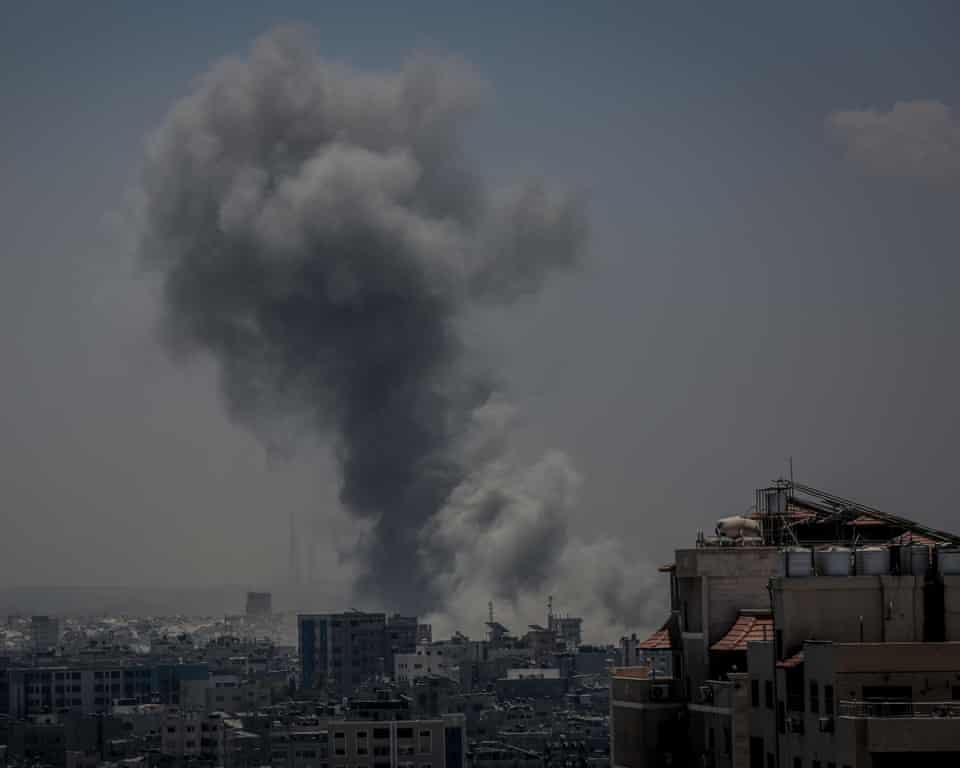Israel has continued its air assault on Gaza, launching fresh waves of strikes just hours after Hamas announced it was ready to enter immediate talks on a US-backed 60-day ceasefire proposal, raising cautious hopes of a pause in hostilities that have now stretched into a 21-month war.
The militant Islamist group’s announcement on Saturday fuelled optimism that a temporary truce, and perhaps the foundation for a permanent settlement, could be achieved in the coming days. In response, Israeli Prime Minister Benjamin Netanyahu confirmed that a delegation would travel to Qatar on Sunday for further negotiations. However, his office also said that changes requested by Hamas to the proposed terms were “not acceptable.”
Despite a relative calm reported by Gaza residents and aid workers on Saturday, at least 24 Palestinians were killed, including 10 civilians seeking humanitarian aid. One of the deadliest strikes hit a cluster of tents in the Mawasi coastal area in southern Gaza, killing seven people, including a Palestinian doctor and his three children. Other fatalities were reported in Bani Suheila and Khan Younis, according to hospital officials.
The Israel Defense Forces (IDF) did not immediately comment on the strikes.
Separately, two American contractors working for the Gaza Humanitarian Foundation (GHF) were injured after unidentified attackers threw grenades at a food distribution site in southern Gaza. The GHF, a US-backed private relief organisation, has faced mounting controversy over its operations in Gaza. United Nations Secretary-General António Guterres recently criticised the foundation, calling it “inherently unsafe” and accusing it of “killing people”, an allegation the GHF strongly denies, saying it has safely delivered tens of millions of meals.
U.S. State department spokesperson blames Hamas
Responding to the grenade attack, US State Department spokesperson Tammy Bruce blamed “Hamas terrorists”, writing on X (formerly Twitter): “This act of violence against the people bringing relief to Gazans lays bare the depravity of Hamas.”
Hundreds of Palestinians have died in recent weeks while attempting to access aid, many shot or shelled by Israeli forces while travelling to GHF sites or gathering around UN aid convoys, which are frequently looted or blocked.
Aid organisations are once again warning of a total collapse of humanitarian efforts across Gaza. Fuel supplies for generators, which power hospitals, communications networks, and aid distribution systems, are nearly exhausted. “We are pretty much down to about half a day’s worth. When that is gone, everything has to shut down,” one aid worker in Deir al-Balah said.
Since the collapse of the last ceasefire in March, Israel has imposed a near-total blockade on the territory. Though limited food and medical supplies have been allowed through, no fuel has been permitted entry. The remaining stockpiles are largely inaccessible, located in combat zones or areas under Israeli control.
Prime Minister Netanyahu is set to travel to Washington on Sunday for discussions with US President Donald Trump, who has publicly expressed a desire to see the war in Gaza come to an end. Drafts of the proposed ceasefire deal, seen by The Guardian, reportedly include a provision that Trump himself would announce the agreement, potentially during Netanyahu’s visit.
However, sources close to Hamas say the group is seeking more concrete assurances that any temporary truce would lead to a permanent cessation of hostilities and a full withdrawal of Israeli troops from Gaza. There is also contention over aid distribution mechanisms: Hamas insists the GHF must be shut down, while Israel wants to maintain an aid delivery system independent of the UN and foreign governments.
Trump’s envoy, Steve Witkoff, is expected to travel to the region to finalise the agreement, although analysts warn that the involvement of multiple negotiating teams flying between Qatar and Egypt could delay any final accord.
The conflict began in October 2023, when Hamas launched a surprise cross-border attack into Israel, killing 1,200 people, mostly civilians, and abducting 251. Of those kidnapped, 50 remain in Gaza; fewer than half are believed to be alive.
Israel’s retaliatory offensive has killed at least 57,000 people in Gaza, according to the territory’s health ministry, a toll that includes a large majority of civilians and is deemed credible by the United Nations and several Western governments.



